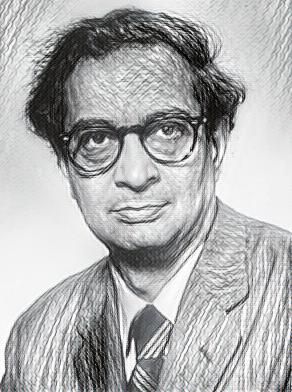Ali Javan
Physicist Ali Javan invented one of the most practical and widely used types of lasers, the gas laser. Created in 1960, his helium-neon laser was the first to provide a continuous beam of light, making it possible to use the technology in fiber optics for telecommunications, medicine, and a variety of other scientific and consumer applications.
Born in Tehran, Iran on Dec. 26, 1926, Javan, who is of Azerbaijani heritage, moved to the United States in 1949 to pursue studies at Columbia University in New York. He completed his PhD in Physics in 1954 and stayed on as a post-doctoral student at the university until 1958. That year, he accepted a post at Bell Telephone Laboratories in Murray Hill, New Jersey.
Around that time, scientists working elsewhere, including Charles Townes – under whom Javan had studied at Columbia – and Arthur Schawlow, were working on laser technology built by pumping an intense light source through atoms in order to extract laser light from them. These are known as “optically pumped lasers.” While working for Bell, Javan conceived of the idea of using electric currents sent through a mixture of inert gases to convert electrical energy into the laser light output.
In contrast to optically pumped lasers, which create pulsating bursts of laser light, Javan’s helium-neon laser produces a continuous beam of light. His prototype for the gas laser, unveiled in 1960, uses two highly reflecting and parallel mirrors at each end of the apparatus, which reflect light between one another. The light then builds in intensity, increasing exponentially as it moves through the device. Javan saw a continuous laser light beam emanate from the device for the first time on Dec. 12, 1960, just before his 34th birthday. On Dec. 13, he and his colleagues used the light to place a phone call. It was the first time that a laser beam had been used to transmit a telephone conversation.
Javan had published his initial idea for the gas laser in “Physical Review Letters” in 1959. For the Jan. 30, 1961 edition, he wrote a letter, with colleagues William Bennett and Don Herriott, reporting his success. Today, hundreds of varieties of the gas laser, in thousands of different colors, are in use, especially in telecommunications. Applications include telephony, Internet data transmission, bar-code scanners, metal welding, and monitoring.
In 1962, Javan left Bell to join the faculty at the Massachusetts Institute of Technology (MIT) as the Francis Wright Davis Professor of Physics, Emeritus. At MIT, he developed a leading research lab that was the largest of its kind in the 1960s and 1970s and was where many of the groundbreaking discoveries occurred in this field, especially during that time period. In addition to his invention of the gas laser, Javan developed the first method for accurately measuring the speed of light and launched the field of high-resolution laser spectroscopy. He also advanced the theory of the three-level maser.
For his work on gas lasers, Javan was honored with the 1964 Franklin Institute’s Stewart Ballentine Medal, the 1966 Fanny and John Hertz Foundation Medal, the 1975 Fredrick Ives Medal of the Optical Society, and the 1993 Albert Einstein World Medal of Science. In 2006, he was inducted into the National Inventors Hall of Fame.
He died on September 12, 2016.


